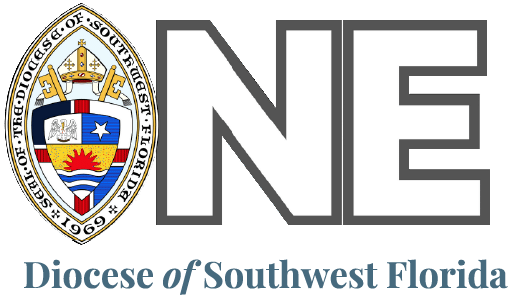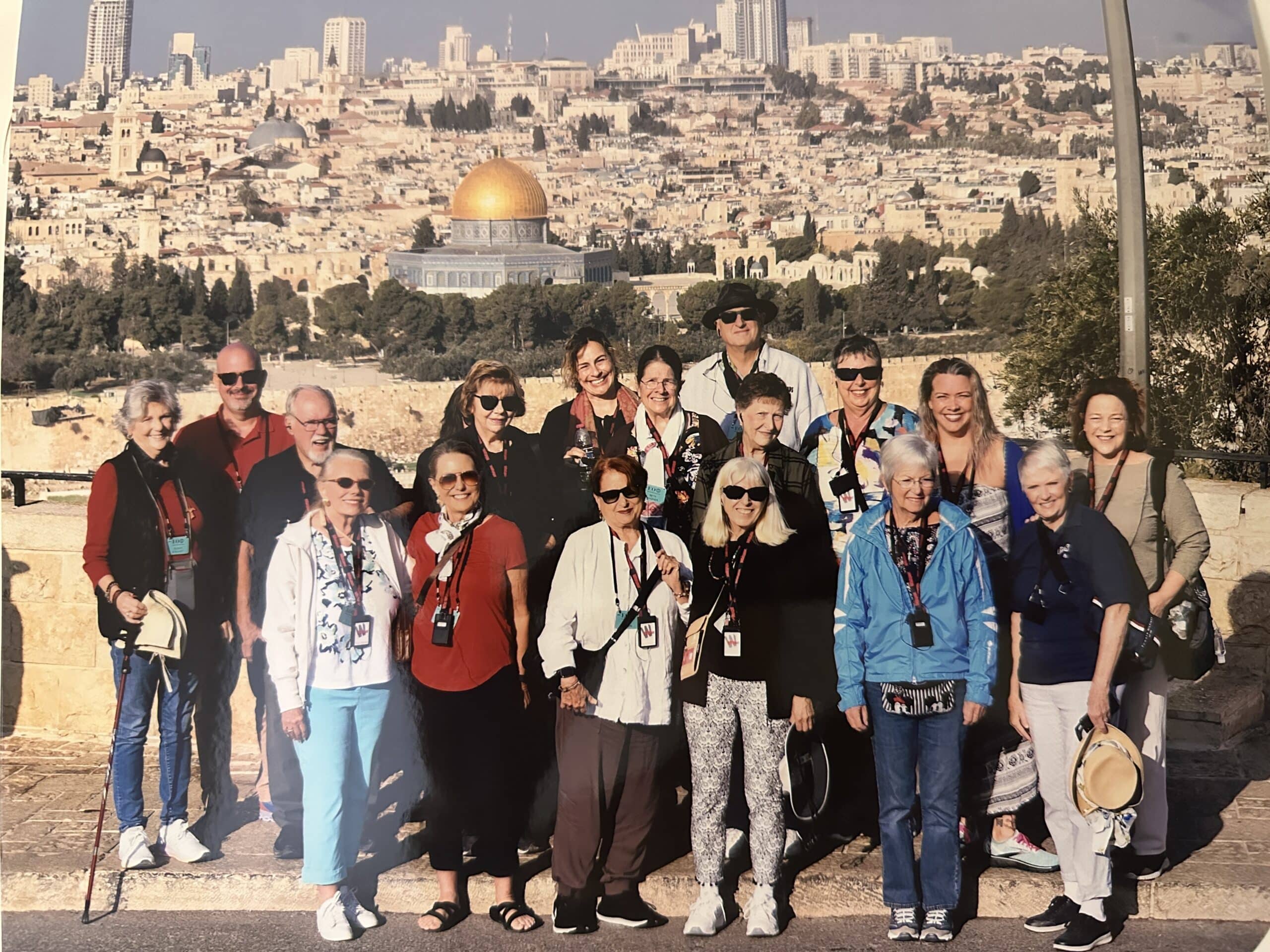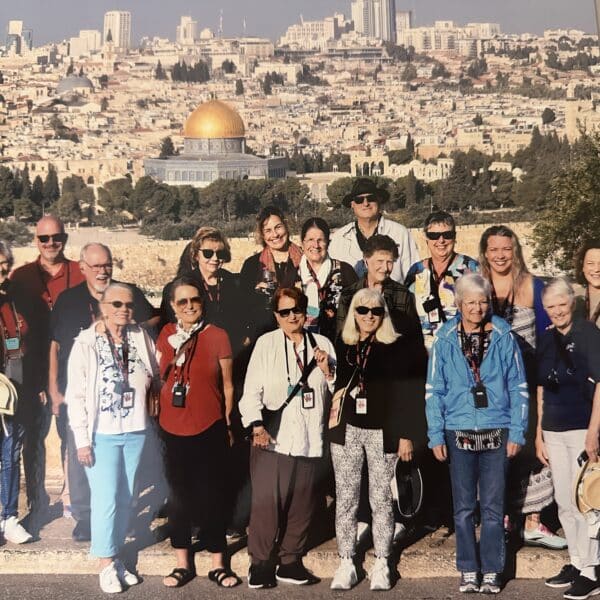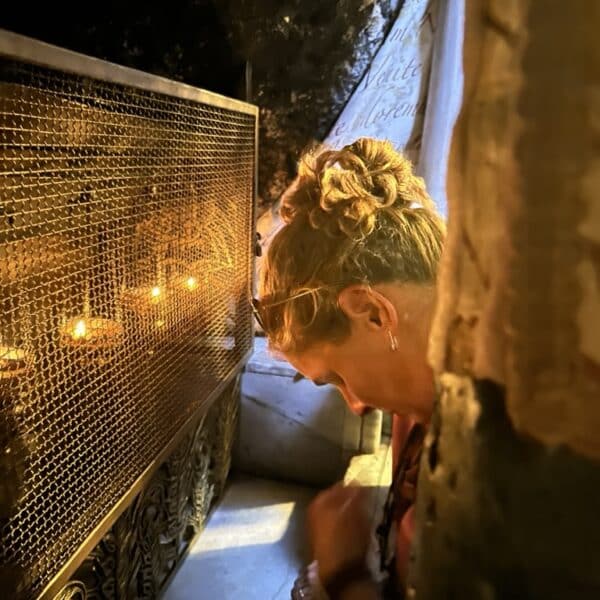This past November, I was one of 18 with St. Mark’s Venice who traveled to the Holy Land. Though I’ve done a “Vision Trip” with World Vision to Kenya, and have led countless mission trips, this was my first formal pilgrimage. Our group convened a few weeks before the trip so the Rev. Mike Rau, my husband and the rector of St. Mark’s, could provide a rundown of how best to prepare. Only a couple of our pilgrims had been to the Holy Land before, and rather than head there with great expectations, I decided to approach this journey as the pilgrims who traveled these roads a millennia ago. Open and unclouded, I took in every sight, listened to the world around me, learned more with every moment, and found myself delighted by it all.
Our group traveled with Educational Opportunities (EO) Tours who arranged our travel, tour guide, lodging, etc. We stayed in nice hotels with incredible food. Our tour guide, Bader, was incredibly knowledgeable, not just in what he was showing us, but how it all related to the Bible. Not all Holy Land pilgrimages are the same. Each tour has different stops, and we chose to see sites from both the Old and New Testaments.
It was a packed trip, and some were embarrassed yet exhausted enough to complain a little. When asked what they’d give up, nobody could answer. A Holy Land Pilgrimage is neither vacation or retreat, so keep that in mind! We were up before 5:30 a.m. and on the road at or before 7 a.m. It was a rare thing to return to the hotel before 6 p.m. It was rigorous, but not impossible, for people with special needs. Many sites have special accommodations for people with mobility issues.
Years ago, I was at a fundraiser for the American Friends of the Episcopal Diocese of Jerusalem. Bishop Kirk Smith and I were chatting, and he shared that before he had gone to the Holy Land, he read the Bible in black and white. After he had visited, he read it in color. I never forgot that. And yes, having been there, the words resonate. Now, when I’m reading scripture, I can visualize rather than just imagine. Much of my perspective and many of my assumptions have been adjusted. For instance, I learned that John the Baptist didn’t survive on locusts—as in the disgusting insect—which I’ve always been taught. I even remember a Sunday school teacher imagining with us children what it would be like to have to eat bugs to survive. This is just one example of how reading something and not fully understanding the context can change our perception. Locust Trees, also known as Carob Trees, are prevalent throughout the Holy Land and bear a fruit, similar to a fig. That’s what John the Baptist ate—fruit!
Though it might not be for another few years, St. Mark’s is already committed to going again. If you’re on the fence about making a pilgrimage to the Holy Land, be persuaded. I never felt unsafe, the food is delicious, and you’ll grow in unimaginable ways. Perhaps the most surprising thing I realized after having had the opportunity to go is that I feel whole in ways I didn’t know I wasn’t. I can’t wait to go back!





